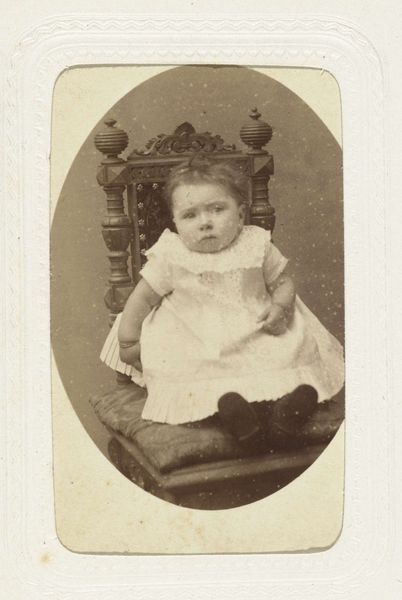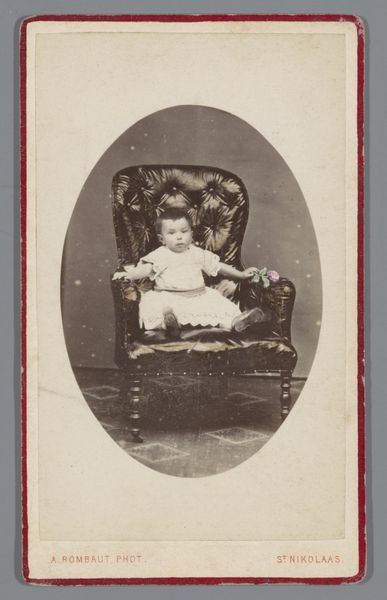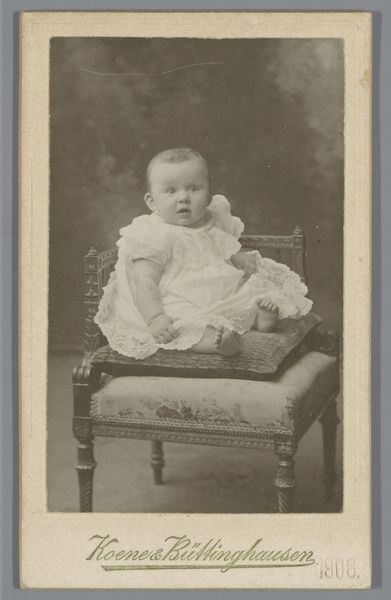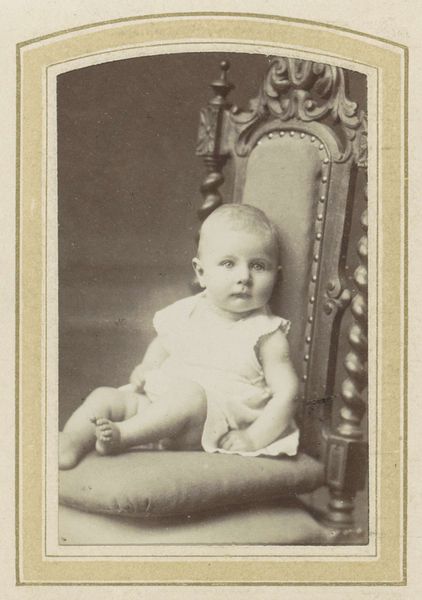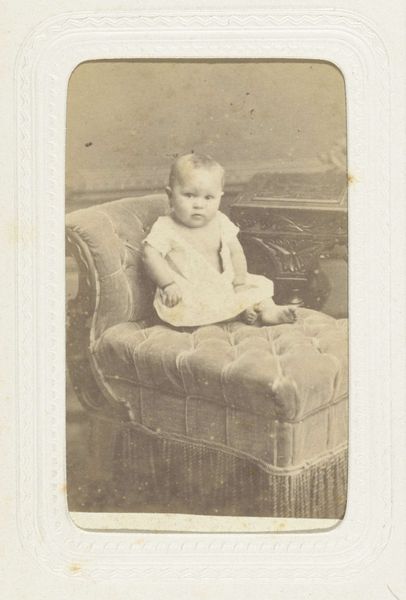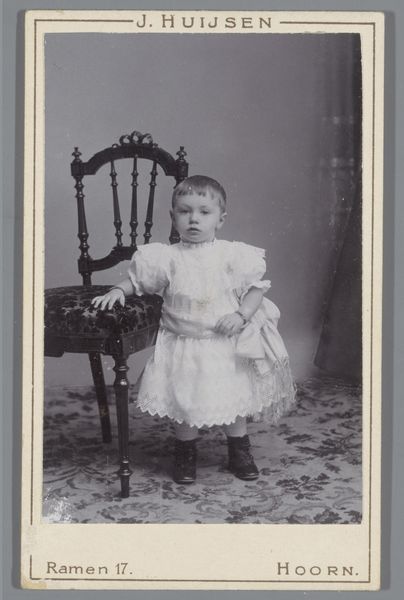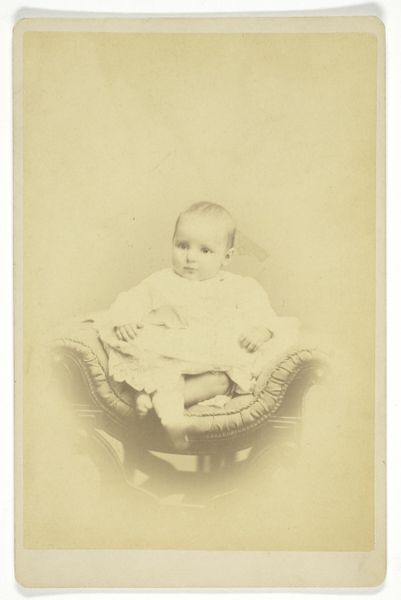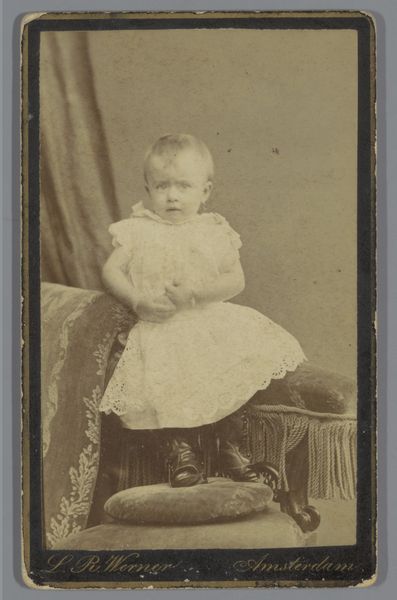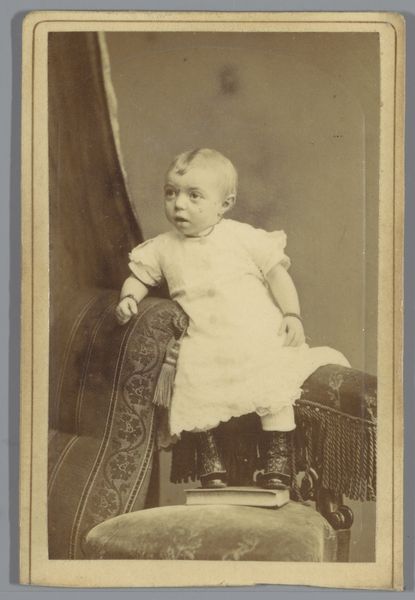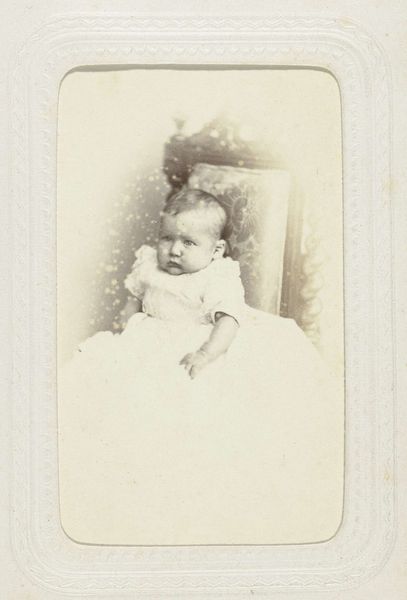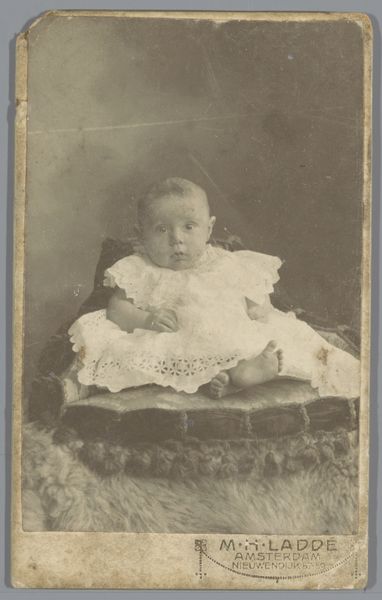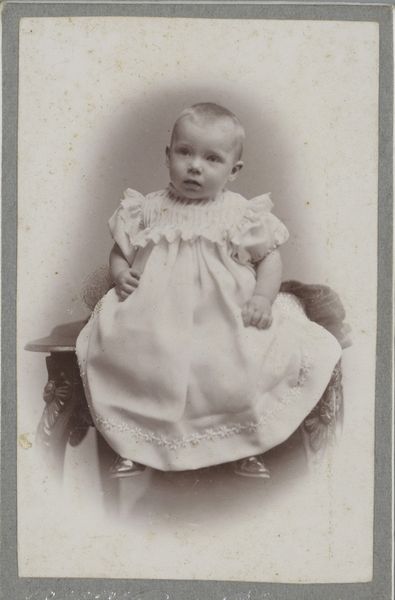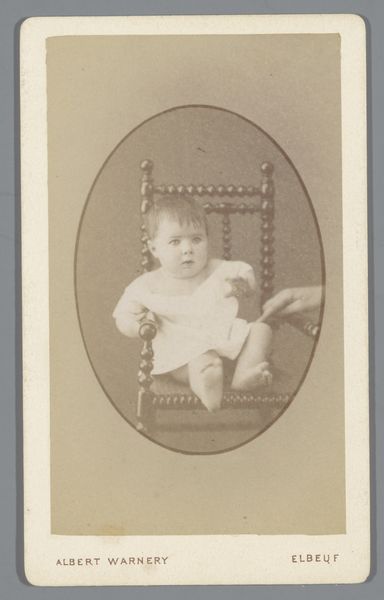
photography
#
portrait
#
photography
#
genre-painting
#
realism
Dimensions: height 91 mm, width 57 mm, height 98 mm, width 61 mm
Copyright: Rijks Museum: Open Domain
Editor: This is an 1860s photograph by A. Böeseken titled "Portrait of a Baby in a Chair with a Drawn Doll". It's fascinating – so serious for a baby portrait. What jumps out at you? Curator: The doll the child holds is more than just a toy. Consider the symbolic weight of dolls across cultures – often stand-ins for fertility, childhood innocence, but also fragility and the ephemeral nature of life. The chair itself, oversized and imposing, suggests the baby is being placed into an adult world perhaps before they are ready. What cultural assumptions do you think went into portraying children like this in this era? Editor: That's an interesting point about the doll. I hadn't thought about that. So it wasn’t just a prop but potentially representing larger concepts. Did people back then commonly think about imbuing images with meaning, or is this more a modern way to look at things? Curator: Oh, it’s definitely not just modern! Think of the historical weight of religious icons and effigies, ancestor figures, or even royal portraits throughout history. To make an image, it to make meaning. I find it especially interesting how a very 'realistic' piece like this may carry unexpected messages and speak of the worldview and social anxieties of its time. Editor: I guess that the seriousness contrasts so starkly with our modern snapshots of childhood. I learned a lot. Thanks for sharing that perspective. Curator: And thank you! Reflecting on visual traditions always teaches us something about how societies construct and convey meaning across time.
Comments
No comments
Be the first to comment and join the conversation on the ultimate creative platform.

